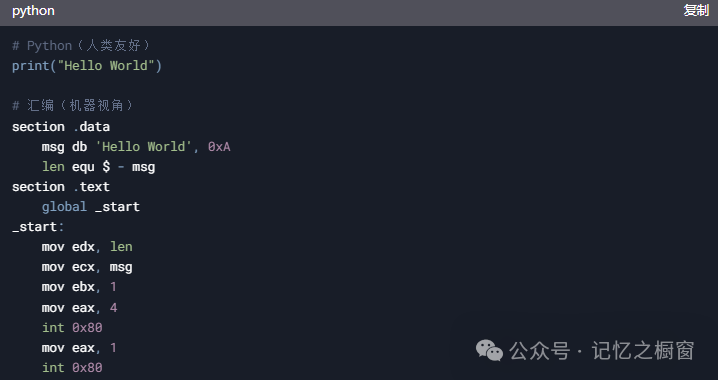1. Breaking Stereotypes: Python’s “Multiple Identities”
Python is like the Swiss Army Knife of the programming world; you can never define it with a single label:
-
For Beginners: It is the **”Instruction Language”** (syntax close to English)
-
For Developers: It is the **”Glue Language”** (easily calls C/Java libraries)
-
For Scientists: It is the **”Calculator Pro Max”** (NumPy handles billions of data)
-
For Hackers: It is the **”Magic Spell”** (3 lines of code to scrape information from the web)
The Truth: Python’s identity depends on how you use it.
2. Technical Dissection: Python’s 6 Layers of “Language Passport”
1. By Level of Abstraction: High-Level Language
-
Comparison Experiment:

-
Essence: Python hides low-level details like memory management, focusing on business logic
2. By Execution Method: Interpreted Language
-
Execution Principle:

-
Advantage: Cross-platform (compatible with Windows/Mac/Linux)
-
Cost: Slower than C/C++ (but can be compiled for speed using
<span>Cython</span>)
3. By Type System: Dynamically Strongly Typed
-
Dynamism: Variables do not need to declare types (but types are immutable at runtime)

-
Strong Typing: Rejects implicit type conversion

4. By Programming Paradigm: Multi-Paradigm Language
-
Object-Oriented: Everything is an object (even numbers are objects)

-
Functional Programming: Supports lambda/higher-order functions

-
Procedural Programming: Suitable for scripting tasks
5. By Application Domain: General-Purpose Language
-
Unlike SQL (which can only operate on databases)
-
Unlike R (which focuses on statistical analysis)
-
Python’s Cross-Domain Capability:
Domain Key Libraries Artificial Intelligence TensorFlow/PyTorch Data Analysis Pandas/Matplotlib Web Development Django/Flask System Operations Ansible
6. By Design Philosophy: Minimalist Language
-
Easter Egg: Type
<span>import this</span>to get the Zen of Python
-
Python is not a language exclusive to a certain field, but a converter that gives ordinary people “technical superpowers”.